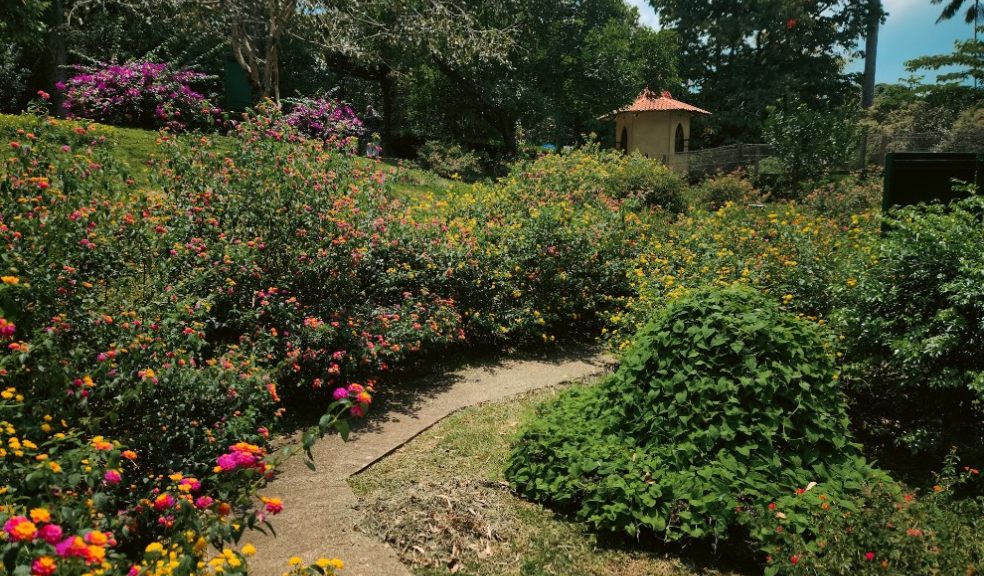
Garden Trends That Help British Gardens Survive Dry Summers
British gardens are facing tougher summers, with hot days and lengthy dry spells happening more often. Traditional lawns of fine grass and thirsty bedding plants are no longer well-suited for these new conditions, so people are adapting garden styles accordingly.
There’s a clear turn towards drought-resilient approaches across UK gardens. Drought-resistant planting is now popular. Some design gravel gardens similar to Mediterranean spaces, while others pick prairie-style planting for strength and colour all season. These changes help save water and trim maintenance, providing tidy borders and ongoing interest right through to autumn.
Wildlife gardening blends well with drought resistance. Native UK plants can survive dry years with little irrigation and still offer food or shelter to bees, butterflies, and birds. Supporting wildlife and supporting garden resilience go hand in hand, with both benefiting from smart plant choices during tough weather.
Why British Gardens Need Drought-Resistant Solutions
The UK climate has shifted notably in recent summers. Rain can arrive in brief, heavy bursts rather than steady patterns, and long dry stretches now affect most parts of England. Reports from the Royal Horticultural Society and British Garden Centres highlight that low rainfall and high heat create increased stress for established garden plants.
This pattern leads to more extreme heat and pressure on classic garden favourites. Even mature shrubs and trees often show signs of struggle after weeks without rain. Water use rises quickly in response. British Garden Centres observes that on hot days, gardens may account for around two-thirds of total household water usage, so changes offer both environmental and financial advantages.
During these dry periods, water companies sometimes introduce hosepipe bans that restrict garden watering, making adaptation a necessity instead of a choice. Jacksons Nurseries now sees greater demand for drought-tolerant selections, validating advice from the RHS.
Gardeners are shifting designs to reflect this variation in weather. Switching to reliable drought species, building healthy soil, and shaping layouts to match sun and wind patterns all bring robust, thriving gardens that handle seasonal extremes and remain attractive throughout the year.
Water-Wise Garden Design Trends
Gravel gardens inspired by Mediterranean planting are spreading across the UK. The Beth Chatto Gravel Garden in Essex has succeeded long-term without artificial irrigation. Gravel surfaces hold back weeds and slow evaporation, giving drought-tolerant species like succulents and Mediterranean herbs a suitable place to thrive.
Rain gardens attract interest for their natural water management. British Garden Centres points out that shallow hollows in borders trap rainwater where it falls, helping it soak in slowly and reach plant roots. These gardens support deep root growth and reduce the need for extra watering.
Planning for shade is wise for any garden prone to heat. Positioning taller, drought-tolerant shrubs or structures on the sunniest sides helps protect more delicate, moisture-loving plants from midday sun. The Royal Horticultural Society recommends grouping plants with similar needs for best results.
Using permeable materials for paths and patio areas allows rainwater to reach the soil instead of running off hard surfaces. The RHS recommends gravel and reinforced grass for these jobs, creating spaces that drain easily while benefiting nearby plants. This also gives gardens a varied, appealing look.
Soil Improvement: Holding and Supplying Water
Adding compost, well-rotted manure or leaf mould helps make soil sponge-like, storing more water for tough spells. Mixing a layer of organic matter into beds and borders can boost water retention for plant roots, though improvements are usually steady rather than dramatic. Saving kitchen waste and raked autumn leaves for compost creates a homemade solution that’s both green and effective.
Many dig compost into single planting holes only, but it’s more effective when spread throughout borders over time. This helps water absorb evenly and prevents drought pockets in the soil, giving established plants the backup they need all summer.
Soil Improvement: Boosting Plant Resilience
Encouraging healthy soil microbes supports long-term drought resistance. Mycorrhizal fungi, now widely used at planting, latch onto roots and help plants take up water and nutrients more efficiently. Dust the fungi into the planting hole and water well for them to get started. This gives new or young plants a head start for their first dry spells.
The fungi will struggle on dry soil if not watered in, so always irrigate at planting time for best effect. Failing this step leaves the benefit untapped and can slow plant settling-in.
Soil Improvement: Compost and Soil pH
Gardeners who separate woody prunings and softer scraps get both coarse mulch and fine compost, each suited for different spots. Turning the heap and keeping it moist helps break materials down. This improves soil structure and adds nutrients. Testing pH lets people match conditions to their planting, so roots take up water well and show fewer dry patches.
Most garden plants suit a slightly acid to neutral pH. Simple home test kits can reveal if adjustments are needed. When soil pH lands in the right range, a garden becomes more drought-resilient and less likely to suffer bald or weak spots.
Drought-Tolerant Plants Transforming British Gardens
The switch toward drought-tolerant choices is clear. The Royal Horticultural Society states that as conditions become drier, gardeners increasingly want plants that succeed with little extra water. Native selections such as sea thrift, bird's foot trefoil, and wild thyme offer a proven track record of survival in low-water years.
Mediterranean herbs—including rosemary, thyme, and lavender—cope well in gravel beds or exposed borders, thanks to their thick stems and scented oils. Their leaves stop water loss, and they require little upkeep for a rewarding display.
Low-maintenance ornamental grasses, such as Stipa tenuissima and blue fescue, need less water after they settle in. For best results, plant them in loose groups and avoid overfeeding, which pushes leafy but thirsty growth.
UK-hardy succulents like Sempervivum and Sedum grow well in containers and dry spaces. These plants store water in their thick leaves and anchor well in sun-baked borders. A common error is watering too much—once settled, these plants stay healthiest with spare attention, not a daily soak.
Efficient Container Gardening for Dry Summers
Some pot materials help conserve water better than others. Glazed ceramic holds moisture inside, while unglazed terracotta allows it to escape quickly. Plastic and advanced composite pots retain more water during hot weeks, making them suited to dry spells.
Mixing plants with similar needs in each pot keeps irrigation simple and avoids overwatering the tough ones. Combining Mediterranean and prairie types in containers lets them flourish together on very little water.
Self-watering pots use a hidden reservoir to keep roots supplied. The soil wicks water up gradually, cutting watering times and wastage. Using moisture-holding crystals or gels, along with coir or vermiculite, supports further water conservation while avoiding heavy, dense soil mixes.
Clever Watering and Harvesting
Drip irrigation feeds water straight to roots with no waste. Thin tubes carry water from the tap to plants, and careful placement means none is lost to the air. Checking emitters from time to time keeps the whole system working smoothly and prevents blockages.
Smart controllers linked to local weather data switch irrigation on and off when needed, cutting out excess. Soil moisture sensors check if the ground actually needs water, sending alerts if it’s dry. Burying the sensor deep enough, just at root level, ensures readings are reliable and the system works as planned.
Rainwater harvesting—collecting water in butts or tanks from gutters—supplies a free, reliable top-up for dry weeks. Filters need regular cleaning to keep water clean and tanks fresh, so set a reminder for a quick check each season.
Grey water from the bath can feed decorative beds, as long as mild, plant-safe soaps are used. Never apply it to crops or edible plants, and occasionally flush the system with clean water to stay safe for garden use.
Wildlife-Friendly Drought Gardens
Well-chosen drought-friendly plants like lavender and sedum stay productive for pollinators even as other flowers dry out. The Beth Chatto Gravel Garden features these as vital summer nectar sources.
Leaving stacks of logs or stones and layering plants by height gives shade, reduces surface evaporation, and supports beetles and solitary bees. Case studies at Kew Grow Wild show these techniques pulling in a surprising mix of pollinators all summer.
Meadows full of yarrow, knapweed and trefoil offer food for a wealth of insects—even with almost no watering. Beth Chatto’s meadow edge uses this low-care model with only one mow yearly, suitable for small homes and large gardens alike.
Wildlife still needs fresh water. The RHS notes that deep or shaded ponds set partly into the ground, with floating plants to cover the surface, slow evaporation and keep water easily available.
Planting species that offer drought-staying power and wildlife value builds gardens capable of weathering dry summers with colour and activity, as demonstrated by the Beth Chatto Gardens and similar spaces across Britain.













